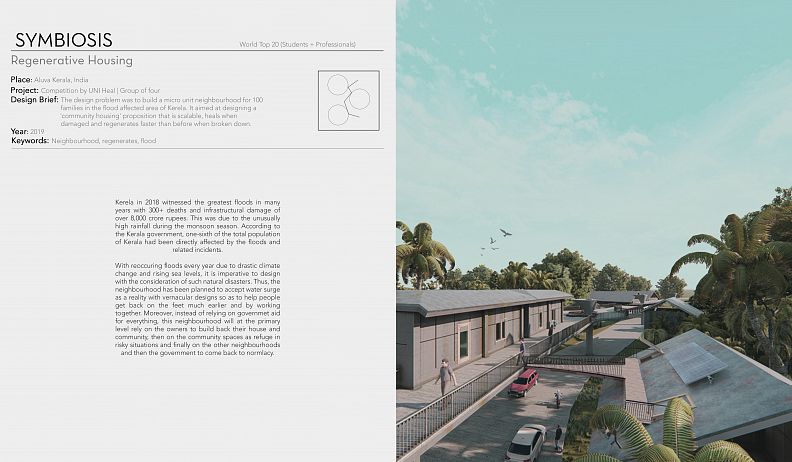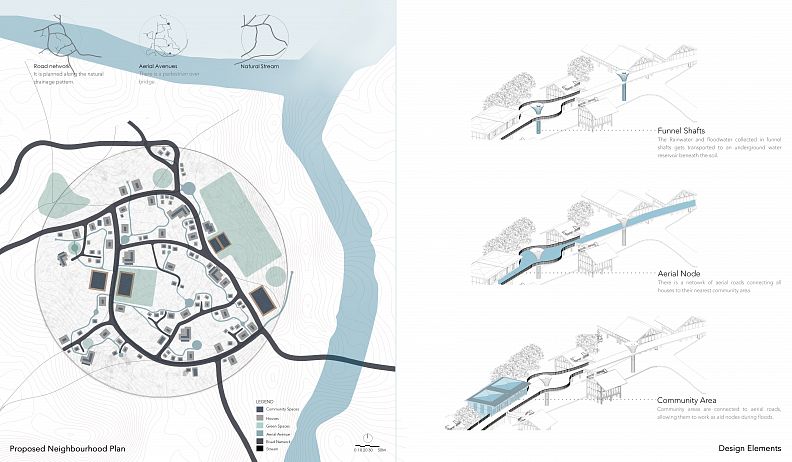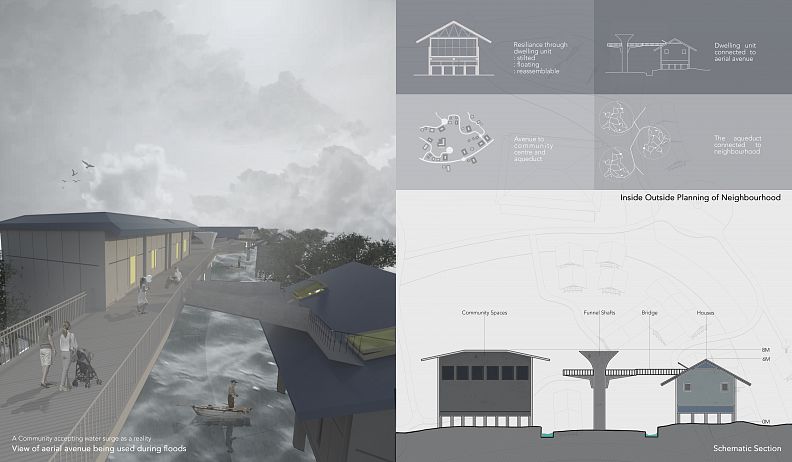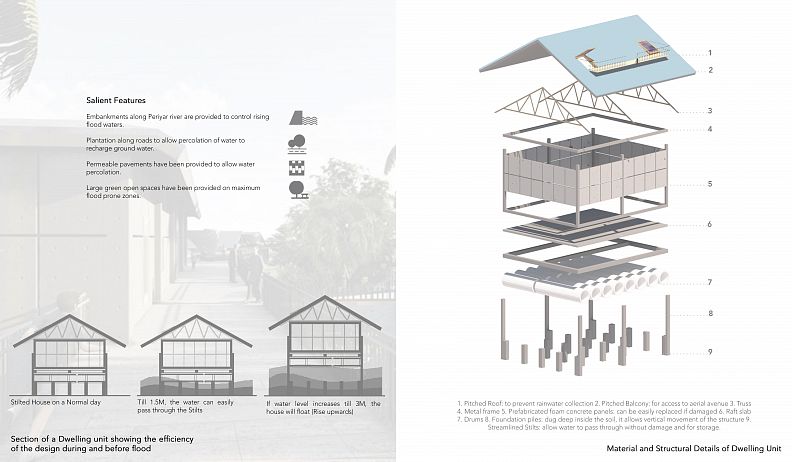SYMBIOSIS- Regenerative Housing

Project idea
The design problem was to build a micro unit neighborhood for 100 families in the flood affected area of Kerala. It aimed at designing a 'community housing' proposition that is scalable, heals when damaged and regenerates faster than before when broken down.
Project description
Kerala in 2018 witnessed the greatest floods in many years with 300+ deaths and infrastructural damage of over 8,000 crore rupees. This was due to the unusually high rainfall during the monsoon season. According to the Kerala government, one-sixth of the total population of Kerala had been directly affected by the floods and related incidents.
With reoccurring floods every year due to drastic climate change and rising sea levels, it is imperative to design with the consideration of such natural disasters. Thus, the neighborhood has been planned to accept water surge as a reality with vernacular designs so as to help people get back on the feet much earlier and by working together. Moreover, instead of relying on government aid for everything, this neighborhood will at the primary level rely on the owners to build back their house and community, then on the community spaces as refuge in risky situations and finally on the other neighborhoods and then the government to come back to normalcy.
Technical information
There is a four-fold resilience established: the habitats are on stilts, have a floating raft foundation, are made of foam concrete and also have a pitched balcony which provides access to a safe aerial avenue. this network has community nodes which act as aid nodes, easing the process of providing help/ supplies to victims.
The neighbourhood of Uliyannoor is so designed that none of the houses lie on natural streams, hence will be minimally affected by flood waters.
Plastic roads are provided, and the road network runs along major streams, directing the flow of water towards the lowest contour levels to control the rising flood waters to a certain level.
Embankments are constructed along Periyar river rainwater and floodwater harvesting depth equals their height, so as to store the extra silt/sand brought by floodwaters for future agricultural use.
Funnel shafts provided at nodes collect the water for future productive use. Their large expanses of land are heavily vegetated.
Permeable pavements are provided everywhere for maximum seepage of water to the underground water table.
Also Houses are designed on the basis of floating house concept.
1. Pitched Roof- To prevent rain water from collecting.
2. Pitched balcony- For access to Aerial avenue and rescue during flood
3. Metal Frame
4. Prefabricated Foam concrete panels (1Mx1m)- can be easily assembled if damage
5. Raft slab
6. Drums- Allow the structure to float
7. Foundation piles- Dug deep inside the soil, it allows vertical movement of the structure.
8. Streamlined stilts- Allow water to pass through without damage






